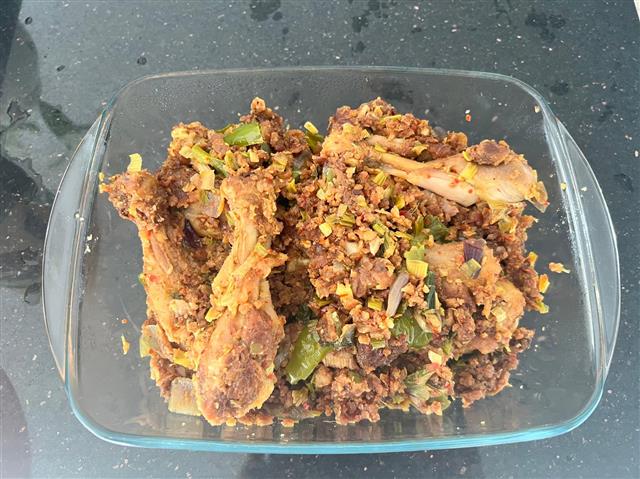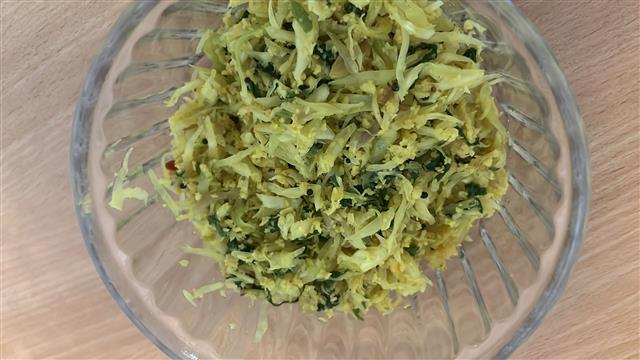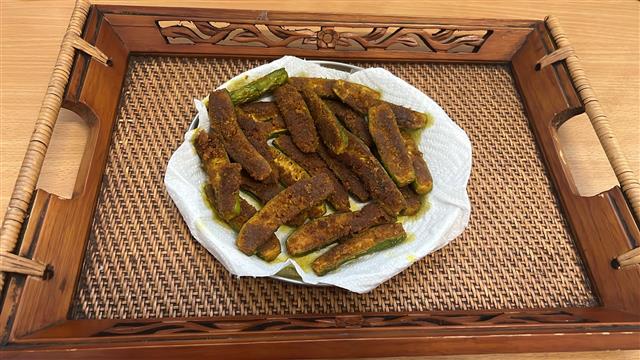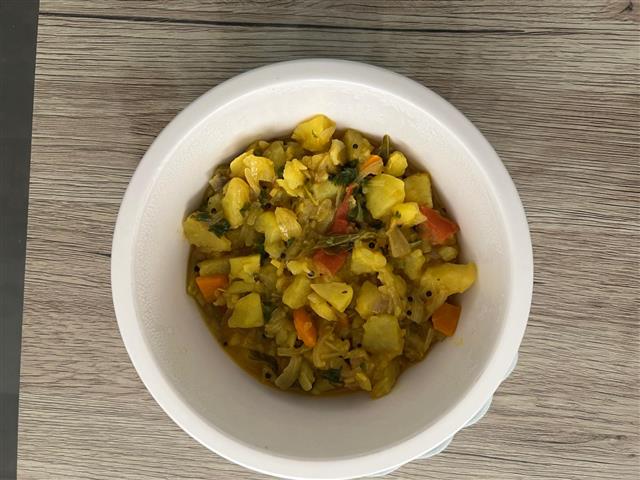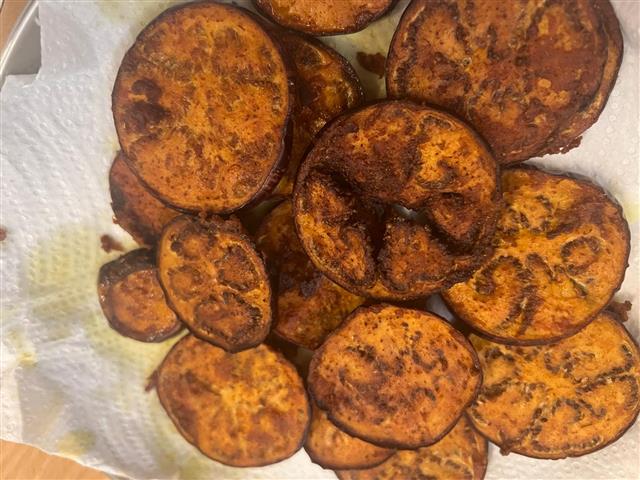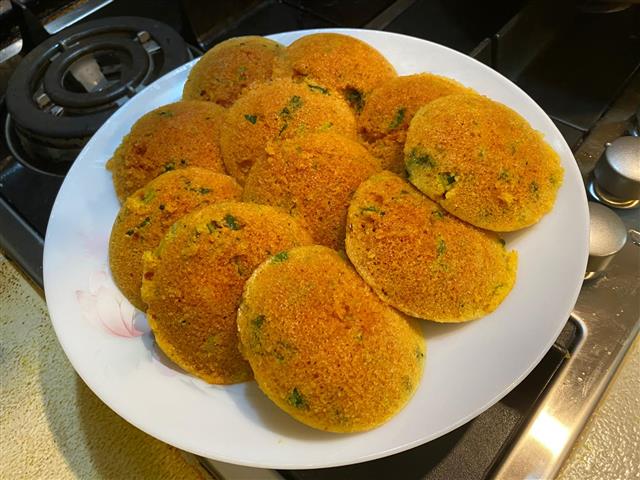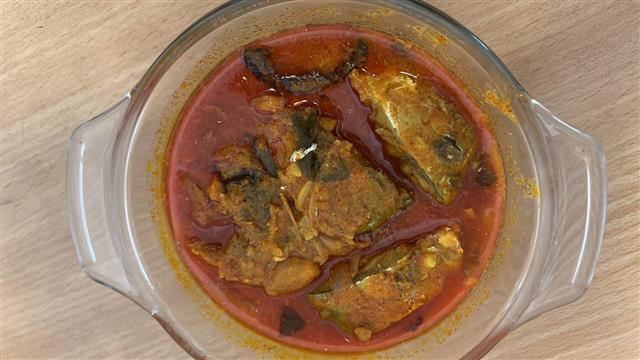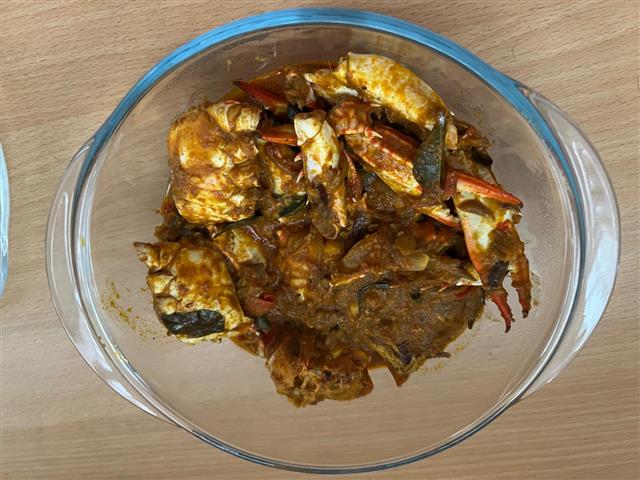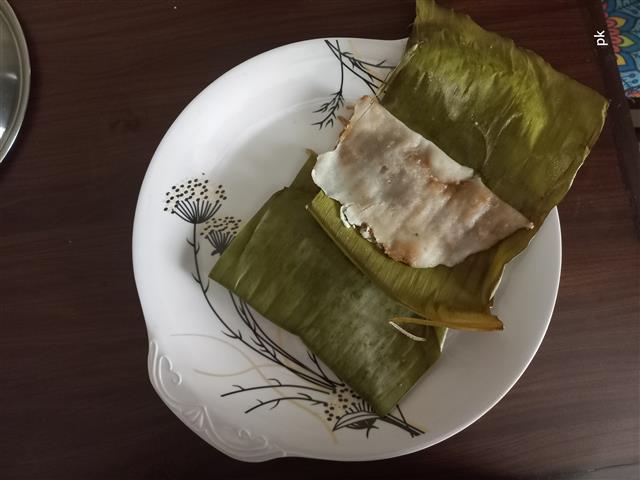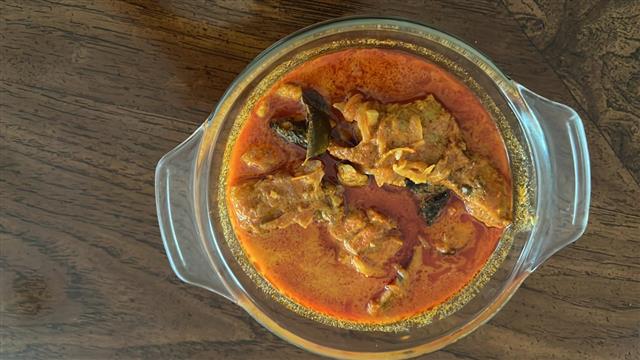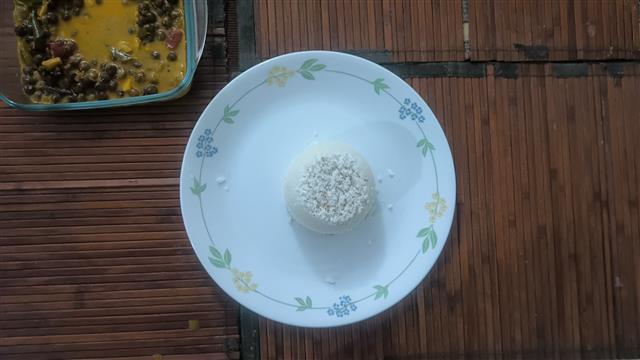
Aloo Baingan
(4 reviews)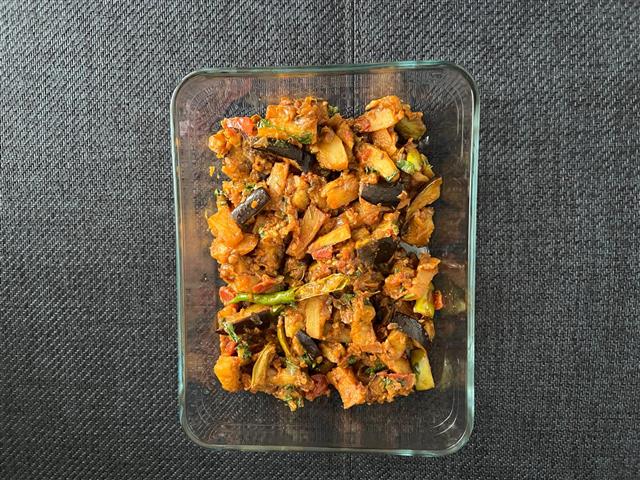
Aloo Baingan is a modern Kerala curry featuring tender potatoes and fleshy brinjal (eggplant).
The vegetables are cooked in a rich onion-tomato masala that has been spiced with traditional Kerala flavours. The potatoes and brinjals are lightly friedbeforea short simmer in a spiced and tangy gravy.
This versatile curry pairs with both plain rice and chapati,. It is a perfect everyday dish across Kerala households.
Ingredients
Directions
- Mash the garlic and ginger and set aside. Chop the onion into thin strips. Finely chop the tomatoes.
- Cut the brinjal and potatoes into big pieces. Pan-fry in three tablespoons of hot oil unti golden brown, and keep aside.
- In the same pan, add the remaining oil. Once the oil is hot, add cumin seeds, chopped onion, ginger, garlic and green chilli. Saute for 2 to 3 minutes.
- Add tomato and saute for a few minutes. Add coriander powder, chilli powder, turmeric powder, cumin powder and saute well.
- Add the fried vegetables and cook them well
- Add the amchur powder and remove it. Garnish with coriander leaves and serve.
Cooking Tips
• Frying vegetables first: This step helps retain texture and adds a caramelised layer that boiling or direct cooking cannot achieve.
• Use coconut oil: For that authentic Kerala flavours and subtle smokiness, always prefer fresh coconut oil.
• Control heat: Adjust green chillies and chilli powder according to your taste preference. Most Kerala dishes tend to have a moderate heat level.
• Uniform chopping: Cut potatoes and brinjal into similar-sized pieces. THis allows for even cooking.
• Avoid overcooking: Potatoes should be tender but not mushy, and brinjals should hold shape without becoming a puree.
• Fresh tamarind or amchur powder: Either ingredient adds a beautiful tang that balances the spices and richness of the dish.
How to Serve
• With Red Rice and Sambar
• With Chapati or dosa
• with Appam or Adai
The Story Behind Aloo Baingan
Aloo Baingan or Potato-Brinjal Curry holds a special place in Kerala kitchens. The modern curry is versatile and open to numerous ways of making it. As a result, it appears regularly on the lunch and dinner menu at home.
Brinjal or Vazhuthananga is a staple in Kerala households, often grown in backyard gardens. When paired with potatoes, an ingredient introduced by the Portuguese through colonial trade routes, the result is a balanced curry that's hearty and tasty.
What is Aloo Baingan?
In Kerala, Aloo Baingan takes on a simpler, earthier personality compared to its Northern counterparts. While it may not be a traditional dish in classical Kerala Sadya, it has quietly found its place in everyday home cooking.
While it's a modern classic, rooted in tradition yet refreshingly adaptable, its core ingredients have deep roots. Brinjal (eggplant) has been cultivated since antiquity. Potatoes have a short culinary history but were swiftly embraced into regional cuisines.
The practice of frying potatoes and brinjal before simmering them in the masala is a cherished technique passed down through generations. It ensures the vegetables retain a lovely bite and do not dissolve into the gravy, maintaining the dish's rustic character.
Kerala version versus Other regions
There are numerous regional styles of Aloo Baingan across India. The North favors a tomato-onion gravy with garam masala, Maharashtra adds goda masala and peanuts, while in Kerala, it's lighter with a touch of sourness. Each version reflects local taste profiles, ingredients, and cooking techniques, showing how this humble curry adapts beautifully to its cultural context.
Unlike North Indian versions rich in garam masala, the Kerala-style Aloo Baingan uses cumin, turmeric, and chilli powder, all of which sautéed in aromatic coconut oil. A gentle touch of tamarind or amchur adds brightness, in keeping with Kerala homecooks and their love for sour flavours.
Ingredient Spotlight
Brinjal (Eggplant): A widely cultivated vegetable in Kerala, that is native to India. this tasty vegetable forms the base of many local recipes. It is low in calories and contains antioxidants, vitamins, and dietary fibre. Its spongy texture absorbs flavours beautifully, making it perfect for curries like my Aloo Baingan.
Aloo or Potatoes: Though not native to Kerala, potatoes have become integral in many local dishes. They add a hearty element and absorb spices well, providing a comforting bite in vegetable mixes.
Coconut Oil: Essential in Kerala cooking, coconut oil imparts a unique aroma and flavours profile that's hard to replicate. It also contains medium-chain fatty acids known for their health benefits.
Its simplicity and satisfying flavours profile make it a staple accompaniment to steamed rice and other Kerala sides like sambar, rasam, or pachadi. Families often rely on this dish when looking for a quick yet wholesome vegetable option that requires minimal prep but offers maximum comfort.
In Kerala, meals are often about balance. Dishes are a blend of spiced, tangy, or creamy ingredients served with lighter, fresher sides. Aloo Baingan perfectly embodies this culinary style, bringing an earthy, subtly tangy element to the plate.
Pro Tips for Perfect Results
→ Don't overcrowd the pan: Fry potatoes and brinjals in batches if needed to avoid steaming instead of frying.
→ Use a heavy-bottomed pan: This prevents burning and ensures the vegetables cook evenly on all sides
→ Cook on medium-low heat: This allows the flavours to blend without burning the masala.
→ Add a pinch of sugar: If the tomatoes are very tangy, a small pinch of sugar balances the tangy with sweet.
→ Fresh coriander garnish: Adds a herbal touch to brighten the dish just before serving.
Aloo Baingan Variations
With coconut: Some versions add freshly grated coconut or coconut paste to enrich the curry's texture.
With carrots or peas: Some people add carrots to peas to the mix.
Use mustard seeds tempering: Add mustard seeds along with cumin seeds for a slightly different flavours.
Add curry leaves: A handful of fresh curry leaves can be tempered with the cumin seeds for an earthy aroma.
Make it dry or semi-gravy: Adjust water quantity to make it a thick stir-fry style or a semi-gravy curry.
Storing & Reheating Tips
→ Refrigerate: Store the leftovers in an airtight container or ziploc bag in the fridge for up to 2 days.
→ Reheat: Warm on low heat in a pan . Add a splash of water or oil to prevent it from drying out.
Tip: Avoid microwave: Microwaving can dry the potatoes and brinjals.
→ Freeze: This curry is best fresh, but you can freeze for up to one week. Thaw overnight the dish in the fridge before reheating.
Common Mistakes to Avoid
→ Skipping the frying step: Makes for soggy vegetables that disintegrate in the curry.
→ Overcooking vegetables: Can turn the curry mushy, and you lose the dish's characteristic texture.
→ Adding too much water: Dilutes the flavours and makes the curry runny.
→ No balancing tang: Omitting tamarind or amchur powder leaves the curry flat without that much-needed lemony taste
Frequently Asked Questions
- Can I make this curry without frying the vegetables first?
You can, but frying adds texture and flavours. Without it, the curry may be softer and less crunchy.
- What can I substitute for amchur powder?
Tamarind pulp or a squeeze of lemon juice provide the tanginess
- Can I make this dish with other vegetables?
Yes! While Potatoes and brinjal are original choices,, you can add carrots, beans, or raw banana.
- Is this dish vegan?
Yes, this dish is naturally vegan and gluten-free.
Equipment Needed
→ Heavy-bottomed frying pan or kadai
→ Wooden spoon or spatula
→ Knife and cutting board
→ Small bowl for measuring spices
→ Serving bowl
